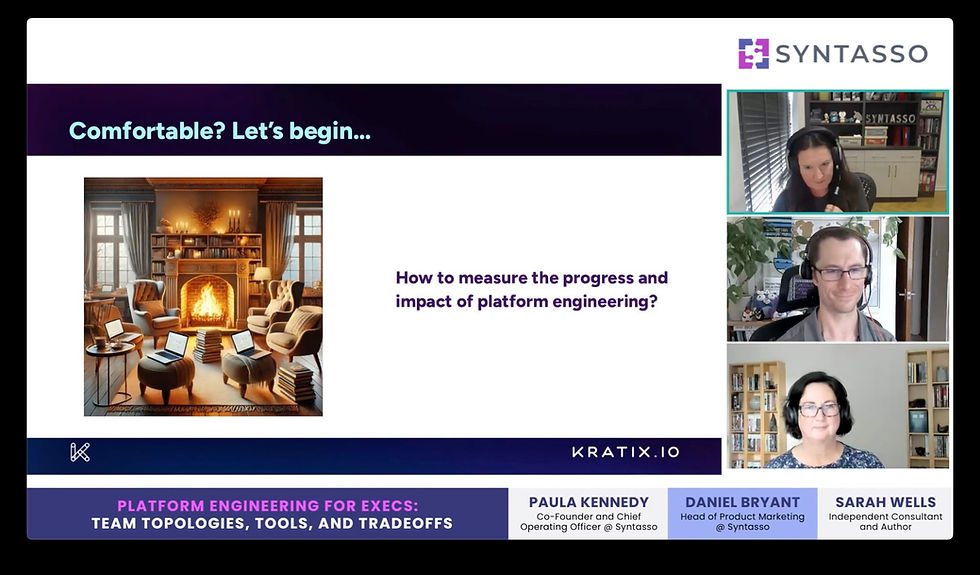Game On: Switch Your Internal Platform to Multiplayer Mode (Webinar recap)
- Ntongha Ekot

- 1 day ago
- 2 min read
In the second episode of our Season 2 webinar series moderated by Daniel Bryant, we looked into how organisations can evolve their internal developer platforms (IDPs) by embracing a “multiplayer” approach. Building on ideas first introduced in her blog post, Paula Kennedy, COO and co-founder of Syntasso expounded on the conversation. She shared real-world examples, responded to audience questions, and offered practical guidance for teams that are just getting started.
The Cognitive Load Conundrum
Paula began by describing the journey many organisations have taken, from siloed developer and operations teams, through the rise of DevOps, to the growing popularity of platform engineering. Platform teams were originally introduced to reduce cognitive load for developers. However, many of these teams are now facing the same issue themselves. The growing number of tools, services, and expectations has led to overload and made it increasingly difficult to deliver a smooth developer experience.

Introducing...Multiplayer Mode
To address this, Paula introduced the idea of “multiplayer mode.” Instead of placing all responsibility on a central platform team, this model enables specialist teams, such as database or security experts, to contribute reusable components into the platform. This producer-consumer model allows knowledge and ownership to be shared across the organisation, rather than concentrated in one place.

At Syntasso, this approach is supported by Kratix Promises, which help standardise and package capabilities in a consistent way that can be easily reused.
NatWest: A Real life Case Study
Paula highlighted a case study from NatWest Bank, which demonstrated this model in action. NatWest set out to reduce cognitive load and enable cross-team collaboration on platform capabilities. Using Syntasso Kratix Enterprise (SKE), they were able to speed up development environment provisioning, improve the developer experience, and grow their platform without significantly expanding the size of their platform team.
Final Thoughts
During the discussion, Paula encouraged teams to start small and focus on solving real, visible problems. A useful first step is to review the platform backlog and identify recurring requests or pain points. If another team within the organisation has the expertise to address one of these needs, that team can be empowered to contribute a reusable component to the platform. This allows organisations to realise the benefits of a multiplayer model without requiring a large upfront investment.
Questions from the audience added further depth to the conversation. Topics included maintaining consistency and security across contributions, and how to support ongoing collaboration after initial setup. Paula emphasised that platform engineering is not just about technology, but also about how teams work together. Success comes from choosing the right interaction modes at the right times, and fostering a culture of shared ownership, communication, and continuous learning.



Comments